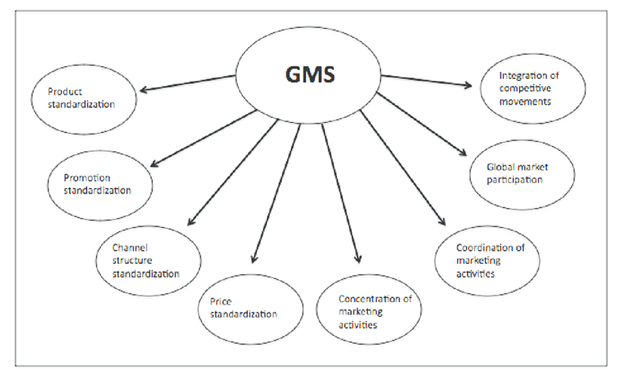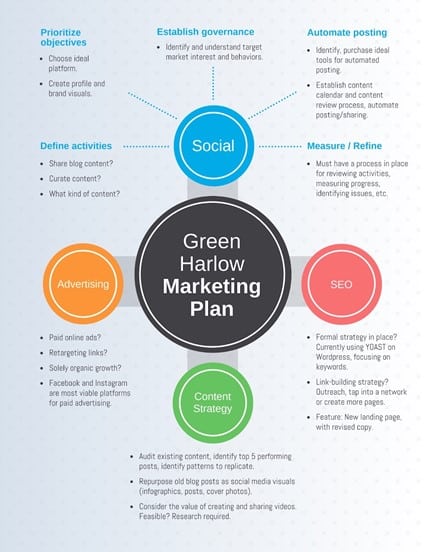Marketing is changing. With the power of the internet, we can reach someone on the other side of the world in less time than it takes us to get from one side of a room to another. Through innovations such as marketing automation, advertising has become more direct, personalized, and efficient.
These advances have opened up opportunities to create products aimed at a much bigger audience, often in places that were once unreachable.
To take advantage of this, businesses must first craft a global marketing strategy that can work across continents. This means it needs to be relatable and appealing to a variety of people and cultures. Here’s how to do it.
IMAGE: UNSPLASH
What Is A Global Marketing Strategy?
It might seem obvious, but a global marketing strategy is, well, global. It should help you to reach new markets from around the world. It doesn’t necessarily have to reach every country, just the markets you identify as likely to respond to your product or service.
IMAGE: RESEARCH GATE
Whilst some aspects of your branding (e.g. your name and logo) likely won’t change, your advertising and messaging may need a rethink depending on the market you’re trying to appeal to.
When done right, a global marketing strategy will unlock new markets and revenue for your business. You’ll want your target audience to easily find you in their internet searches, so it pays to give some focus to your SEO strategy and keyword research, for example.
Is It The Right Time?
Before you market your products globally, you need to ask “is it the right time?” It might seem obvious, but it’s a mistake made by numerous businesses. In fact, 90 percent of new startups fail, with 50 percent not making it to the 10-year mark. This is, in part, due to poor marketing decisions.
Before you go global, ask yourself some basic questions. Does your business have the resources, staff, and organization to breach new markets? Above all, is your product or service performing well in your market? If not, this is a good indication that your focus needs to remain at home, with the aim to increase sales, for the time being.
Assessing the situation can save you time and money that would otherwise be wasted on an unsuccessful global marketing strategy.
Knowing Your Audience And Where To Find Them
Before you can launch a global marketing strategy, you need to know which markets and countries are likely to respond to what you have to offer. If you have an online store or website, Google Analytics can be a fantastic tool to see who’s visiting your site and where they’re accessing it from.
You could also contact customers directly through customer feedback forms or other customer experience software. This helps you understand where they’re browsing from, as well as their demographic and interests. From here, you can start to build a customer profile.
Think about the different aspects of your campaign. Each will need resources. This includes staffing, translations, online marketing, etc. Once you’ve decided on potential markets, you’ll have to begin allocating budgets. How do you want to market your brand? On social media, perhaps, or through an email blast service? How about in person, with posters or flyers?
Whatever way you market yourself, you’ll need to find a cost-effective way of reaching your audience. If you’ve done the right amount of research, you’ll be able to prioritize expenditure much more easily.
By identifying the countries generating the most engagement, you can begin to plan which markets to focus on. In knowing this, you can feel more confident that your global marketing strategy is likely to be both effective and profitable.
Adapting To Different Markets
So, you’ve identified the kind of markets that fit with your business. Does this mean you can now go straight to marketing to these audiences? Well, not exactly. Every country has its own humor, culture, and terminology. If your marketing doesn’t adapt to these, it will fail.
By the end of 2021, digital ad spending is expected to reach $389 billion. With so much advertising going on, your marketing needs to cut through the cacophony to stand any chance of being effective.
Start by researching the markets you want to appeal to, inside and out. Remember you mustn’t assume attitudes and beliefs will be the same as in your home country. This means your messaging, advertising, and some of your branding will need to change.
As you would at home, consider what’s trending in a certain market and how you can incorporate it into your marketing.
If you’re marketing a product to various countries, you can’t have the same packaging and look for each of them. Each nation will have its own style and design preferences. The kind of packaging found in a western country may be radically different from that of an eastern country, for example.
You must also think about the kind of phrasing and terminology you use in your marketing and branding; just because a phrase works at home, doesn’t mean it will work within a different market. The kind of messaging found on your website or app needs to adapt too if you’re to deliver the best content experience.
Your marketing phrase could have little appeal elsewhere. Worse, it could mean something entirely different. An example of this is car manufacturer American Motors, whose midsize car, ‘The Matador’, translated as ‘killer’ in Spanish. Considering potential blunders beforehand can save face and the need for a rebrand.
Sometimes, different markets mean changing the kind of products you offer too. A prime example is McDonald’s. The brand is present in over half the countries in the world. If you’ve ever been to a Mcdonald’s abroad, however, you may have noticed a different menu to the one at home. In India, where the cow is seen as sacred, the brand has had to completely redesign its menu away from beef.
By adapting your messaging and products toward different markets, you stand more of a chance of generating a favorable response.
Planning Your Marketing
Every good marketing strategy starts with a well-thought-out plan. Once you’ve begun to get an understanding of a new market, take time to formulate an approach to tackling it.
IMAGE: VENNGAGE
How will you measure success? How will you structure your strategy between different markets? Make sure that, as well as long-term goals, you plan for the short and medium-term.
Customers mustn’t perceive you as having a lack of experience, even if you are just starting out. A carefully constructed plan will help you appear professional.
As with any business strategy, take time to examine all the factors that will influence success (or failure) within the new market. Think about potential pitfalls i.e. what events could negatively impact you?
Share your plans with your team. For your marketing to be well-executed, communication is essential. You’ll want the best headset for conference calls so communication is clear even when you’re working remotely.
Consider any difficulties you could run into too. In doing this, you will be more likely to successfully adapt to adverse circumstances should they arise. With a well-thought-out plan, you can feel more confident that your resources are going to the right places.
Incorporating SaaS To Help With Global Marketing
A commonly asked question is whether SaaS can help with global marketing? In short, yes! SaaS helps you to set targets, measure your performance, and improve decision-making, but you still have to get the basics right.
Take note of the points in this blog, apply the right SEO for SaaS, and you’ll have a head start on your competitors.
Choosing The Right Platform
When planning a global marketing strategy, you need to think about how you’ll reach your audience. Social media is an obvious route, as 3.96 billion people use it globally. Whichever nation you’re targeting, there’s a good chance that a large portion of its population uses such platforms.
But it’s not as simple as that. While marketers will typically look to Facebook to reach a target audience, there are several big markets where it’s not the primary platform. Both China and Russia are examples of this. China, where Facebook is blocked, uses a platform called QZone, while Russia prefers VKontakte.
When operating with new and unfamiliar platforms such as these, having local teams to take care of your marketing is vital. No matter how much research you do, you’ll never have the same knowledge as someone who’s experienced a market firsthand.
By selecting the right platforms and outsourcing to local teams, you can be sure your marketing is reaching the right people and sending the right messages.
Working With Local Teams
You’ll need to let local teams lead the way with your marketing and listen to their feedback. They’ll be able to tell you what works and what doesn’t within their market.
Communication is key here. There needs to be constant dialogue between local teams and your main operation. Short meetings, such as a stand up conference, can be a great way to check-in and track progress.
You can learn from your experiences in individual markets and allow this to shape your approach to future campaigns. Every market is different and should be treated differently, but lessons learned from other audiences can often be applied across your global marketing.
Was there an error in translation? Think about what processes you can introduce to avoid these in the future. Did you have a successful campaign in a new market? Pinpoint the different elements that came together to ensure success. If you used local culture in your campaign, consider how you incorporated it.
By sharing this information across your teams, they’ll be better informed on how to improve their future marketing. You’ll also be improving overall communication within your organization.
Getting The Translation Right
If your global marketing strategy is to succeed, it needs to have a sound allocation of resources. There will be spending factors that you wouldn’t need to consider for a local market. The biggest is translation. If you’re working with markets that don’t speak your native language, you’ll need to translate your marketing materials.
Getting your translations right is extremely important, as shoddy marketing materials will reflect very poorly on your brand. It’s an age-old lesson that even some of the biggest names have failed to learn.
One unfortunate but hilarious example is KFC. The fast-food chain’s catchphrase – ‘Finger Lickin’ Good’ – is world-renowned, but it didn’t pan out quite so well in China. There, the phrase was inadvertently translated to ‘we’ll eat your fingers off’.
Another example is American Airlines, who, when trying to enter the Spanish market, translated their slogan ‘fly in leather’ to ‘fly naked’.
As amusing as these examples are, this sort of mistake leaves a poor impression on the market you’re trying to breach. It can also remain online as a humiliating reminder of your translating mishap for years to come.
Enlisting the help of professional translators is a good place to start. As already mentioned, certain parts of your branding will need adapting to fit with different markets. You can share ideas remotely and find ways to translate your marketing to fit with a certain region. For example, a whiteboard app can be a great way to exchange ideas.
A professional translator should have a strong knowledge of a particular region or culture. This will help you craft marketing materials that leave an impact and work well in the region you’re targeting.
Learning From Your Audience
Part of adapting to a new, unfamiliar audience is learning from them. There are many ways you can do this, including surveys, focus groups, and talking to customers directly.
If a product is landing well in one market but not in another, try to find out why. Something as simple as a color or name change could make all the difference in determining the overall success of whatever it is you’re selling.
Sometimes, you might find a certain product simply won’t work within a given market. If this is the case, don’t worry. It’s far better to plan alternative products tailored to an individual market than to spend time and resources on a product that will never be successful.
By learning from your audience, you’re much more likely to do well in different markets.
Expanding Your Marketing – Going Global
Adopting a global marketing strategy is the first step in taking your brand to the next level. If you want your business to become a world-renowned name, your offering needs to be professional, appealing, and relatable to markets across the world.
This means crafting a well-researched and thorough marketing plan, recruiting the right kind of people, and managing remote teams successfully. Part of this involves learning from your mistakes to perfect future campaigns.
It also means knowing when and when not to go global with your brand. Recognizing your resources and limits is key to growth. When you do decide to break into new markets, don’t overreach yourself. Start small and work your way up.
With the right kind of plan, discipline, and knowledge, you’ll transform your brand and never look back.
IMAGE: UNSPLASH
If you are interested in even more business-related articles and information from us here at Bit Rebels, then we have a lot to choose from.




COMMENTS